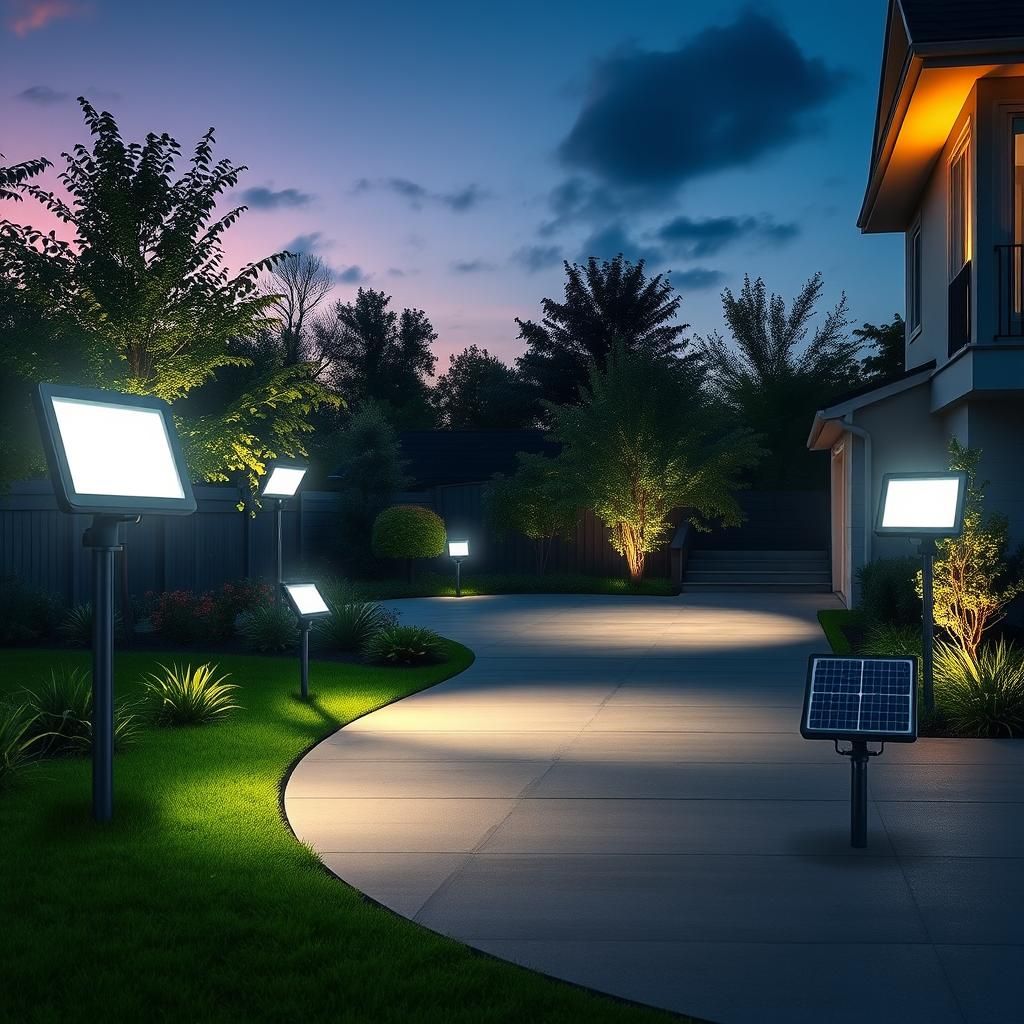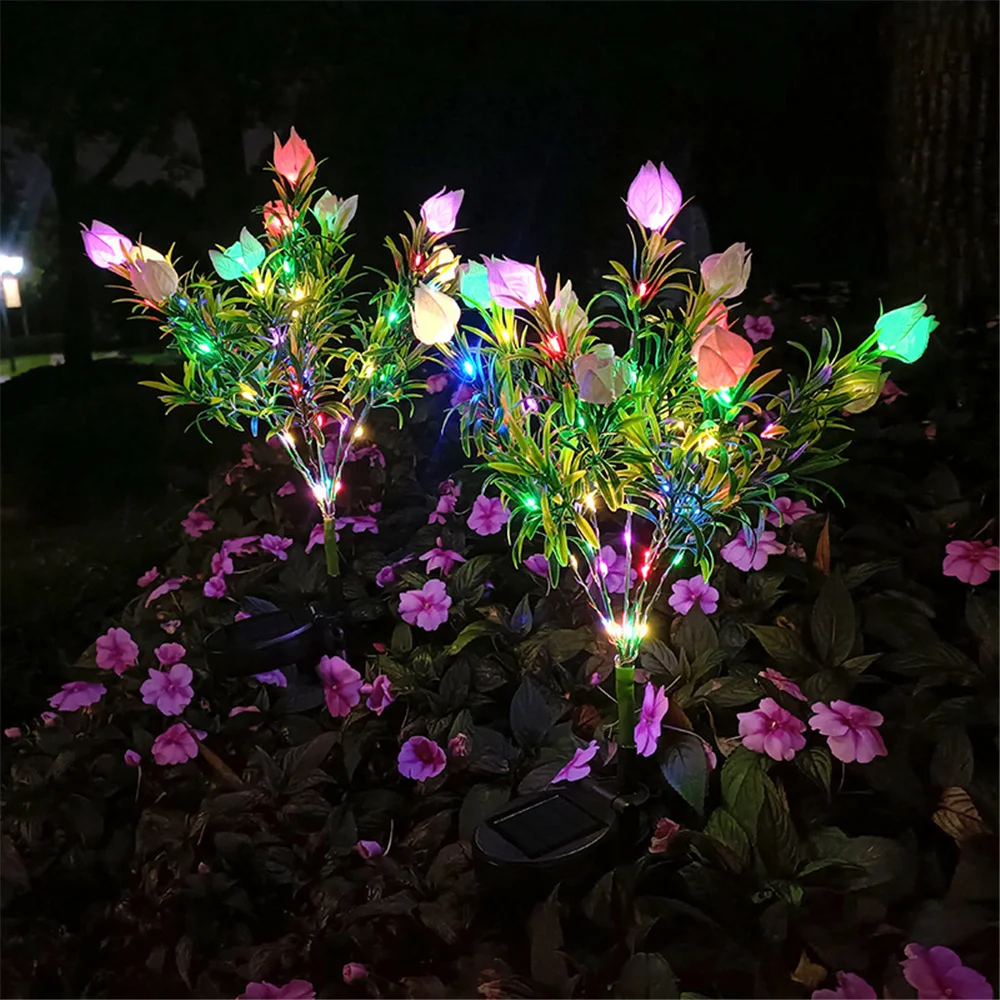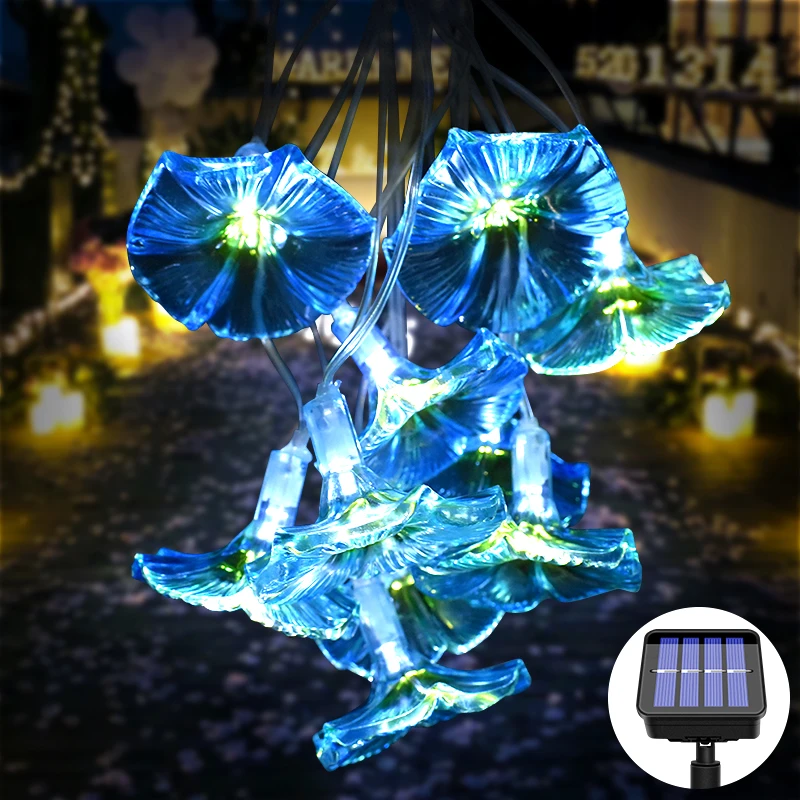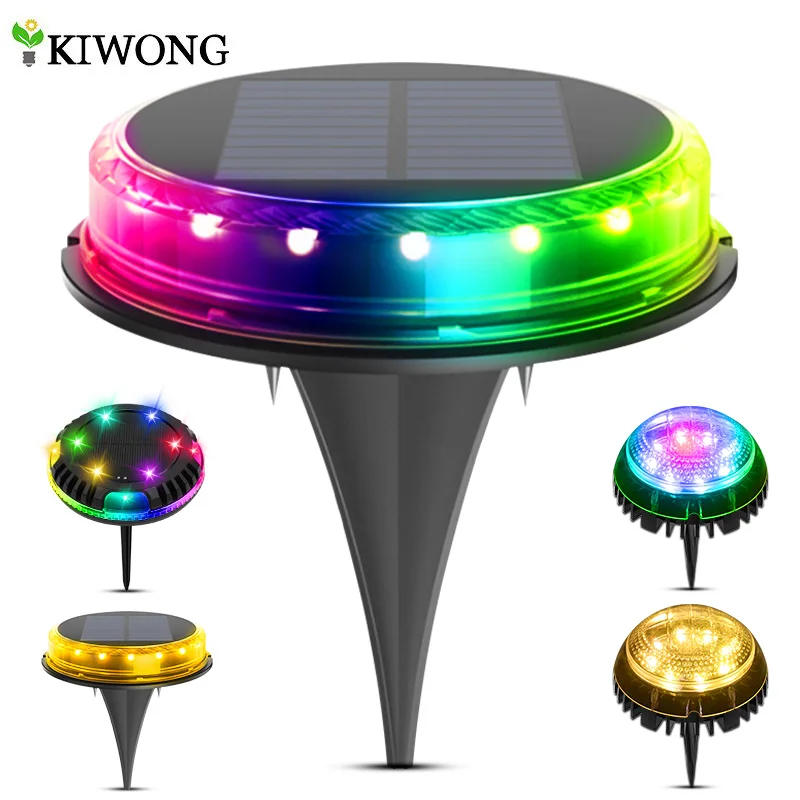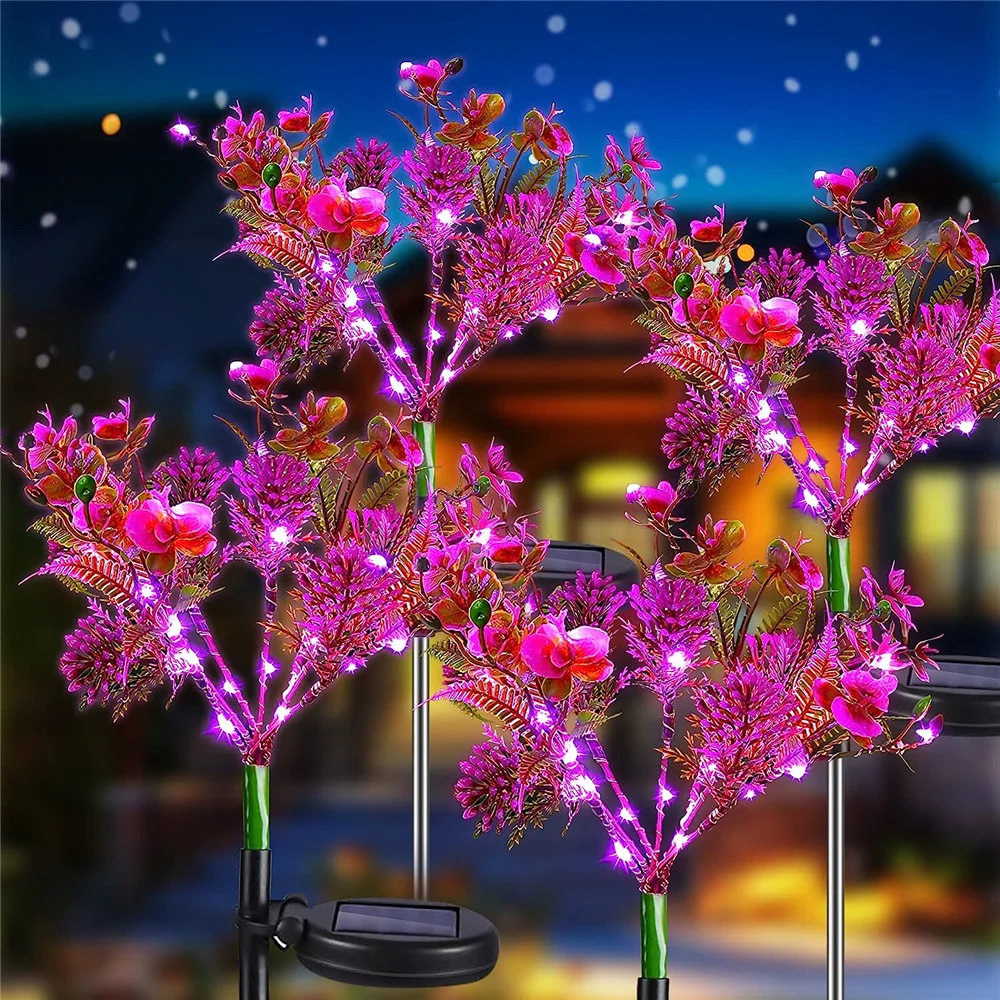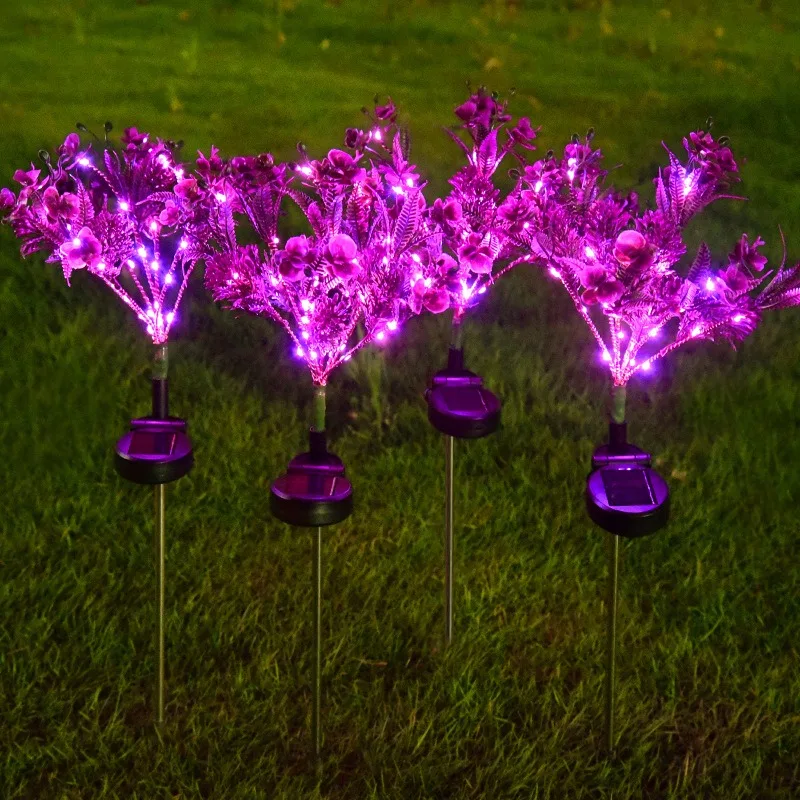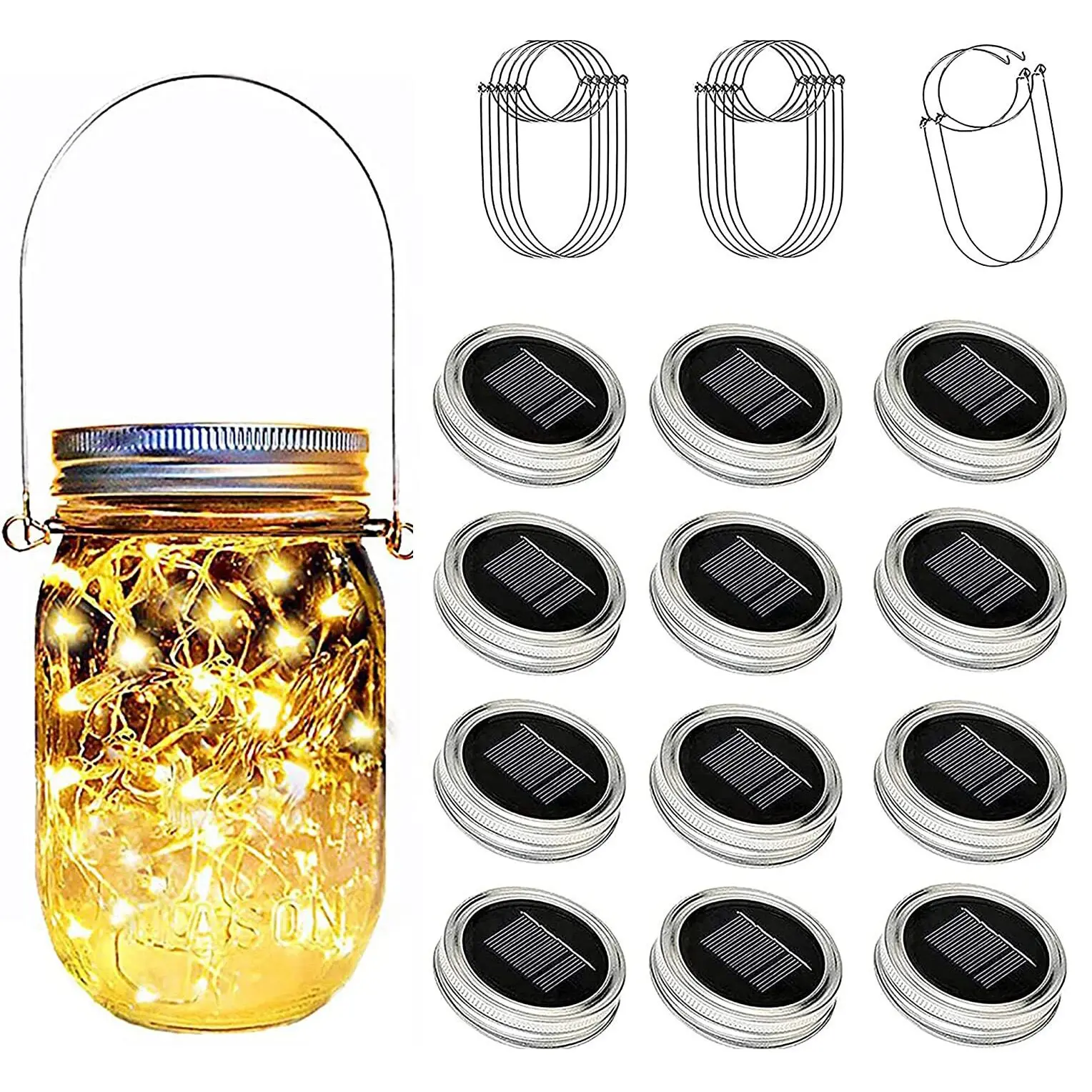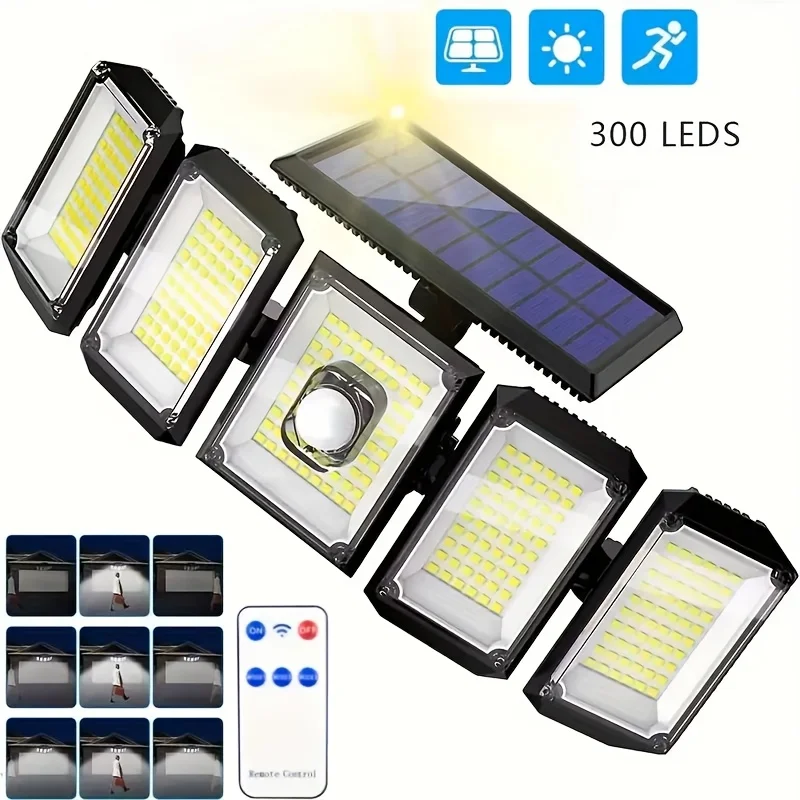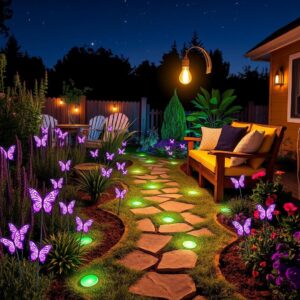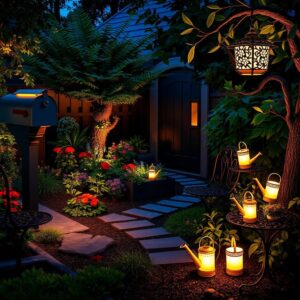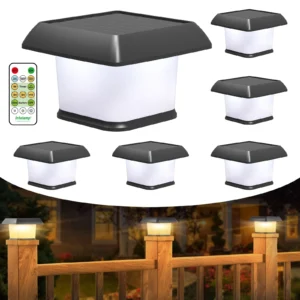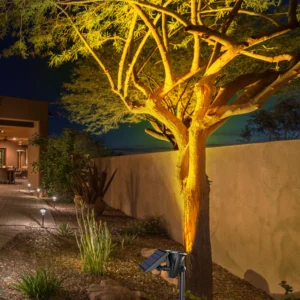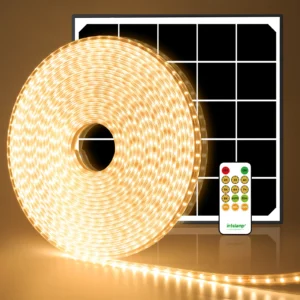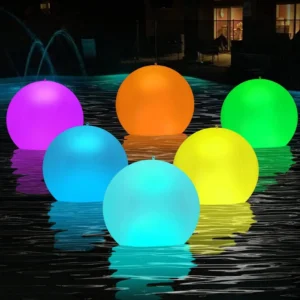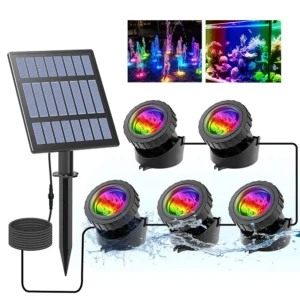Solar Garden Light with 42 LEDs – Waterproof Gardenia Design
1. Introduction to Lumens and Solar Lighting
So, what exactly are lumens, and why should you care when it comes to solar lights? Simply put, lumens measure the total amount of visible light a lamp produces. Think of it as how brightly your backyard or driveway will glow after the sun dips below the horizon. The higher the lumens, the more light you get—and for solar lighting, that glow is pure magic powered by the sun itself.
Solar lighting has come a long way. Not that long ago, solar garden lights were little more than cute but dim decorations. Today, thanks to leaps in LED technology, battery efficiency, and solar panel design, solar lights can rival and sometimes even outshine traditional wired lights. This blend of cutting-edge efficiency and effortless sustainability makes solar lighting the smart choice for anyone wanting to brighten their outdoor spaces without messing with electrical cables or racking up energy bills.
Understanding lumens is key when choosing the right solar lights. It’s tempting to grab the brightest model on the shelf, but more lumens don’t always mean better. It’s about matching brightness to your space and purpose: a soft glow for cozy evenings or a sharp beam to illuminate paths and security zones. Knowing what lumens you need helps you avoid lights that burn out too fast or overpower your garden’s natural charm.
So, what is the highest lumens for solar lights you can expect in 2025? Thanks to vibrant advances, some solar floodlights now boast lumens upwards of 20,000, blasting brilliant light across large areas like parking lots or sports fields. On a smaller scale, residential solar lights with lumens in the hundreds to low thousands offer bright, eco-friendly options for patios or pathways. This spectrum of brightness makes solar lighting incredibly versatile.
In short, lumens are your guiding star in the solar light world—this measure of brightness helps you pick the perfect fixture that turns dusk into a warm, inviting, sun-powered glow. As solar tech shines brighter, lighting your nights becomes a simple, sustainable joy.
Morning Glory Blue Solar Flower Light – 10 LED Garden Decor
2. Brightness Levels of Solar Lights: Residential vs. Commercial
When it comes to solar lighting, brightness isn’t a one-size-fits-all number. Understanding the typical lumen ranges for different settings is key to getting the right light for your space—whether it’s a cozy backyard or a sprawling commercial site. Let’s break down what you can expect from residential to big commercial solar lights in 2025, shining a clear light on how brightness meets purpose.
For residential solar lighting, brightness usually stays within modest ranges to create both functionality and ambiance without overwhelming your garden or patio. Spotlights, often used to highlight landscape features or supplement security, typically reach up to around 3,000 lumens. That’s enough to cast sharp, distinct beams over trees, statues, or even your front door. For outdoor floodlights geared towards broad illumination—think driveway lighting or backyard gatherings—levels can climb as high as 5,000 lumens. These provide a strong, welcoming glow that balances security with a warm, inviting atmosphere. It’s enough to keep shadows at bay and create a useful, enchanting outdoor space after dark.
Step into the commercial realm, and the lumens dial cranks up dramatically. Large outdoor areas like parking lots, industrial yards, or sports fields demand powerful lighting to ensure safety and visibility for high traffic or activity. Here, solar floodlights pack a punch with brightness levels soaring up to 22,200 lumens. Such intense beams flood vast stretches of pavement or warehouses, replacing or supplementing traditional wiring with clean solar-powered brilliance. The sheer power makes these lights reliable workhorses for demanding environments where human activity needs clear, safe illumination late into the night.
At the frontier of solar lighting innovation, specialized high-lumen solar lights are pushing boundaries even further. Certain projects—like stadiums, large event spaces, or security zones with 24/7 alertness—use solar fixtures producing between 30,000 to 40,000 lumens. These lights aren’t just bright; they’re luminous giants that rival the wattage-driven traditional lighting setups but with all the benefits of solar independence and efficiency.
So, what drives these choices in lumen needs? Think about scale, function, and mood. A quiet garden path doesn’t require stadium-level glare—soft glimmers are enchanting enough. Meanwhile, industrial sites can’t afford dark spots or compromised visibility; their lights must blaze bright and steady. Knowing these typical ranges helps you match your outdoor space with just the right wattage of brilliance, ensuring your solar light isn’t too dim to be useful or too bright to feel harsh.
In short, whether it’s a low-key residential spotlight or a high-powered commercial floodlight, in 2025 solar lighting shines with options aplenty—bright enough to suit your world, and smart enough to do it sustainably.
Solar Inground Lights – Adjustable Color-Changing LED Outdoor Lights
3. Energy Efficiency and Technological Advances in High Lumen Solar Lights
When it comes to high-lumen solar lights in 2025, the magic lies in balancing raw brightness with smart energy use. It’s no secret: cranking up the lumens can gobble up power, but thanks to leaps in LED and solar tech, brighter now means smarter. Modern LEDs don’t just shine—they do so efficiently, producing more light per watt while keeping energy demand in check. This is the backbone that allows for solar lights blasting up to tens of thousands of lumens without draining their solar-charged batteries overnight.
At the heart of this balance is the solar panel and battery duo. Larger solar panels are like solar light’s appetite satisfiers—they gulp more sunlight during the day, storing enough juice to power intense nighttime illumination. Meanwhile, sophisticated batteries with higher capacities hold that energy securely, releasing it steadily when darkness falls. It’s not just size, though—advances in battery chemistry reduce energy loss and extend life cycles, making sure your bright garden beacon isn’t dimmed by early battery fatigue.
But pumping up the brightness isn’t all smooth sailing. High-lumen solar lights face the challenge of maintaining efficiency without wasting precious energy on heat or inconsistent output. Enter innovations like advanced heat dissipation in LED modules, which keep bulbs cool and glowing long, and better power management chips that regulate current, ensuring every solar ray stored becomes a steady, strong beam after sunset.
Furthermore, solar panel design has grown more sophisticated. Multifaceted and higher-efficiency panels harvest sunlight more effectively, even in less-than-perfect conditions. Coupled with smart battery management systems, these panels help high-lumen solar lights stay luminous longer, bridging the gap between environmental unpredictability and consistent brightness.
So, when looking at high-lumen solar lighting, think of it as a marriage between evolved LEDs, strategic solar panel size, and cutting-edge battery tech. Together, they let you light up expansive outdoor spaces or create dazzling highlights without surrendering to energy inefficiency. It’s this synergy that defines the future of solar lighting—where powerful beams meet eco-smarts, keeping your nights brilliantly bright and sustainably charged.
Solar Phalaenopsis Flower Light – Decorative Outdoor Garden Light
4. Choosing the Right Brightness Level for Outdoor Solar Lighting
When it comes to lighting your outdoor spaces with solar lights, knowing the right brightness—or lumen level—to go for can make all the difference. Let’s keep it straightforward: too dim, and the light won’t serve its purpose; too bright, and you waste energy and possibly annoy your neighbors. It’s about finding that smart balance.
For ambient garden lighting or creating a cozy glow, think small and subtle—around 30 to 100 lumens. This is the kind of light that gently accentuates pathways, flower beds, or seating areas without overpowering the night. It’s enough to sneak by in the dark but still keeps things intimate, like soft candlelight scattered through the leaves.
Step up to security lighting for typical residential areas, and you want something stronger—somewhere between 400 and 800 lumens. This level is perfect for deterring intruders, lighting up entrances, or brightening decks and porches so you can spot what’s going on without resorting to harsh floodlights. Practical, reliable, and easy on your solar panels.
For commercial or industrial spaces, the stakes change. Areas like parking lots, loading docks, and large outdoor venues demand higher lumen outputs—anywhere from a few thousand lumens to over 20,000 depending on the scope and safety requirements. These bright spots powered by the sun show that solar lighting can handle serious, large-scale jobs, illuminating spaces where clarity and visibility are non-negotiable.
Matching lumen levels to your needs is key—not just raw brightness but how your space will use that light. Consider factors like size, activity level, and acceptable glare. Are you lighting up a quiet backyard or an active business zone? Each calls for a specific approach. For security lights, for instance, aim for that sweet spot where brightness meets energy efficiency: bright enough to see clearly, but smart enough to preserve battery life and ensure consistency through cloudy days.
So, before you pick up solar lights, ask yourself: what’s the story I want my garden or property to tell when night falls? Whether it’s a whisper of light or a bold statement, the right lumen level will bring that vision to life while keeping your solar system humming efficiently.
Solar Phalaenopsis Flower Lights – 4-Pack Decorative Outdoor Lights
5. Comparing High Lumen Solar Lights with Traditional Lighting Alternatives
When it comes to outdoor lighting, the age-old debate continues: solar versus traditional wired electric lights. High lumen solar lights have surged ahead in both brightness and efficiency, turning skeptics into believers. Let’s cut to the chase—how do these two lighting types really stack up?
First, brightness. Modern high lumen solar lights can rival, and in some cases, surpass the illumination of wired electric lights. Thanks to leaps in LED technology and battery storage, solar floodlights now deliver up to 30,000 lumens or more, lighting up large outdoor spaces with impressive intensity. This level of brightness wasn’t imaginable a decade ago. Solar lights don’t just shine—they roar, with an eco-friendly whisper.
But brightness alone doesn’t tell the whole story. Efficiency matters. Solar lights have a distinct edge here. They harness the day’s sunlight, converting it into clean energy stored in batteries, then cast light without drawing from the grid. This means zero electricity bills and a smaller carbon footprint. Wired lights, while reliable, tap into fossil fuel-powered grids in many areas and rack up ongoing energy costs. Solar bollards and post tops—those charming, softly glowing pillars lining garden paths—embody this win-win: smart design paired with sustainable power.
Cost-effectiveness is where solar really shines over time. Yes, the upfront price can be higher than installing wired systems, especially for high-lumen models. But factor in years of no energy costs, minimal maintenance, and incentives in some regions, and solar lights turn into a savvy investment that adds value and magic to your outdoor space.
Of course, no solution is perfect. Traditional wired lighting still holds strong for continuous, heavy-duty lighting needs—like industrial sites or locations with limited sun exposure. Wired setups also avoid the occasional hiccup of cloudy days or shadowed spots that challenge solar panel efficiency. In these scenarios, wired options provide steady light without compromise.
In summary, high lumen solar lights have closed the gap on brightness and often leap ahead in eco-smart efficiency and cost savings. They offer a brilliant, practical alternative for most outdoor lighting needs, transforming gardens, walkways, and commercial spaces into radiant showcases powered by nothing but the sun. Traditional wired lighting still plays its part, but solar is fast becoming the first choice for those ready to blend power with purpose.
LED Butterfly Solar Lights – Outdoor Decorative Solar Garden Lights
6. Practical Tips for Selecting High-Lumen Solar Lights
Choosing the right high-lumen solar light doesn’t have to be a puzzle. To get a bright, reliable glow that lasts and suits your space, there are a few straightforward things to keep in mind.
First off, check the solar panel size and battery type. Big panels soak up more sun, and bigger or higher-quality batteries store more juice. That means your light won’t just flare brightly for a minute and fade fast—it’ll maintain a consistent glow through the night. Think of it as fueling a steady campfire rather than chasing a spark. When shopping, look beyond just the lumens number—know how the light charges and holds power in real-world settings.
Next, size up the lighting area and what it needs to do. A wide driveway or backyard requires more brightness—say 1,000 lumens or more—to really light the way, while a cozy patio might shine perfectly with 100 to 300 lumens. Don’t fall into the trap of over-lighting small spaces; it can create harsh contrasts and waste energy. Under-lighting, on the other hand, leaves you squinting in the dark. Use the lumen rating as a tool—not the only factor—to tailor your garden’s natural rhythm with its new electric pulse.
Understanding product specs also saves headaches. Look for clear information on run time, charging time, and beam angle. Some solar lights beam a focused spotlight, others spread soft ambient light. What matches your mood and purpose? Also, be aware of things like waterproof ratings and build quality—these practical details keep your bright moments glowing through rain and frost.
Maintenance is often overlooked but key for long-term performance. Dusty panels block sunlight, so a quick wipe now and then preserves charging power. Batteries degrade over time, but many solar lights have replaceable cells—you don’t need to toss the whole thing when the light dims. Keep connections clean and check that mounting stays firm; a wobbly light wastes precious rays and dims the magic.
In short: Pick your panel size and battery wisely, know your lighting needs and space, read specs with an eye for practical details, and keep your solar lights happy with simple upkeep. With these thoughtful steps, your high-lumen solar lights will turn your outdoor spaces into brilliantly lit retreats that reliably shine night after night.
Solar Powered Mason Jar Lid Insert Fairy Lights for Decor
7. Debunking Common Myths About Solar Lights
Solar lights have come a long way, yet a fog of myths still lingers—clouding judgment about their true performance and value. Let’s cut through that mist and get real about what solar lighting can and can’t do.
First up, the weather hurdle. “Solar lights don’t work well on cloudy days”—you’ve likely heard this before. While it’s true that solar panels depend on sunlight to harvest energy, modern panels are surprisingly adept at soaking up diffuse light. Even on overcast days, they capture enough energy to keep your lights glowing through the night. Sure, super stormy stretches might dim the glow, but for typical cloudy weather, solar lights hold their own without a hitch.
Then there’s durability. Folks often wonder if solar LED lights are fragile or prone to breakdowns. Truth is, these lights are built tough—designed to brave the elements, from summer downpours to chilly winters. Quality LED bulbs last tens of thousands of hours, while weatherproof casings shield the solar modules and batteries from moisture and dust. If anything, the lack of wiring means fewer electrical faults, making them surprisingly reliable for long-term use.
On to money talk—solar lights sometimes get a bad rap for upfront cost. Yes, they can cost more than a basic wired bulb upfront. But think like a Spartan: invest wisely now, and reap long-term gains. Solar lights save you on monthly electric bills and eliminate wiring expenses. Over time, they pay for themselves with hassle-free, zero-cost energy harvesting. Plus, their low maintenance needs mean less spending down the road.
Real-world stories back this up. Commercial sites switching to solar floodlights report hefty savings while lighting large outdoor spaces with dazzling efficiency. Homeowners enjoy cozy garden glow-ups that never spike their electricity meters. Experts agree: solar lighting is not just viable; it’s often the smartest, most sustainable choice.
So, peeling back these myths, solar lights show up as solid, dependable, and cost-savvy companions for your outdoor lighting dreams—all powered by the sun, no strings attached.
5 Heads Solar Outdoor Wall Lights | 300 LEDs Motion Sensor Lamp
As we wrap up our journey through the brightest horizons of solar lighting in 2025, one thing stands clear: the evolution of solar lights has pushed luminosity to impressive new heights. From humble garden path lights casting a gentle, twinkling glow, to industrial-scale floodlights pouring out tens of thousands of lumens, solar lighting is no longer just a charming addition—it’s a powerful, practical choice for nearly every outdoor setting.
Understanding what the highest lumens for solar lights mean isn’t just about bragging rights for brightness. It’s about matching the glow to your needs. Whether you seek a soft ambiance for quiet evenings or need a beacon of security on a busy commercial site, there’s a solar solution tailored just for that. The trick lies in balancing raw brightness with energy efficiency—a dance made possible by cutting-edge LEDs, bigger, smarter solar panels, and batteries that keep the light going long after sunset.
Looking ahead, the significance of high-lumen solar lighting goes beyond mere illumination. It’s about embracing a cleaner, self-sustaining way to light up our nights, free from the tangle of wires or the guilt of soaring energy bills. And with advances in technology making these high-output solar lights more reliable and affordable than ever, there’s no reason to settle for less than the light your space deserves.
So, whether it’s brightening up your backyard with a constellation of solar path lights or flooding a commercial loading zone with the radiance of a mini sun, solar lights today bring magical, sustainable brightness right at your fingertips. Ready to light the way? Dive deeper into solar light choices, match your brightness to your space, and watch your nights shimmer — powered purely by the sun, and your imagination.

